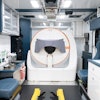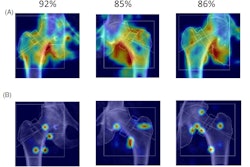New research published December 4 in the Canadian Medical Association Journal offers a framework for determining whether older adults who have fallen need CT imaging.
Head CT is a common imaging exam used to assess patients who have fallen, "but sending every patient who has fallen for a head scan is inefficient and costly," wrote a team led by Kerstin de Wit, MD, of Queen's University, in Kingston, Ontario, Canada.
"Overuse of CT in this population prolongs the emergency department visit, which has been shown to increase the rate of delirium while also diverting resources from other emergency patients," de Wit said in a statement released by the journal. "Furthermore, not all emergency departments have 24-hour on-site CT scanning facilities, meaning that some of these patients may be transferred to another center."
De Wit and a team of emergency department physicians from across Canada and in the U.S. developed the Falls Decision Rule via research that included 4,308 patients ages 65 or older (median age, 83) who visited one of 11 emergency departments within 48 hours of falling. Of these study participants, 26% were taking anticoagulant medication and 36% antiplatelet medication, both of which increase the risk of bleeding, the investigators noted.
If used, the new rule would avoid unnecessary head CT in 20% of the study population, and complements the Canadian CT Head rule, "which applies to patients with disorientation, amnesia or loss of consciousness," the group concluded.




















